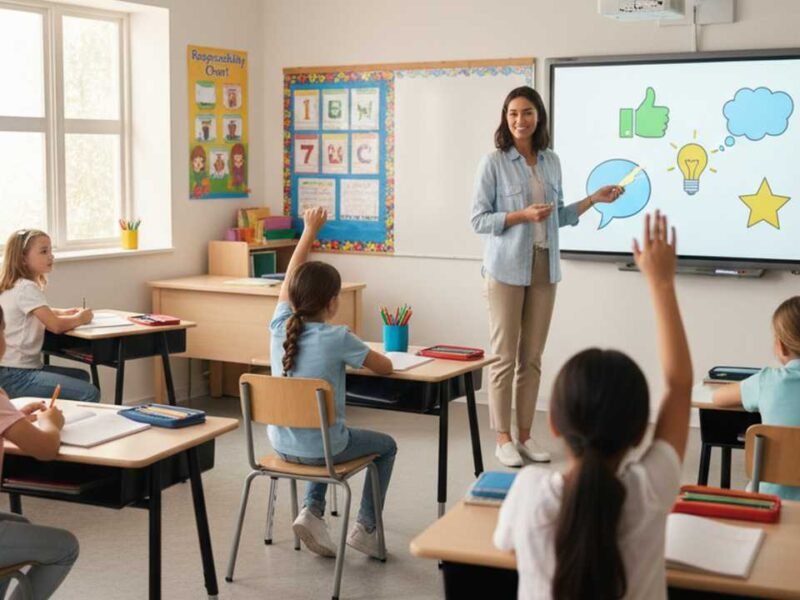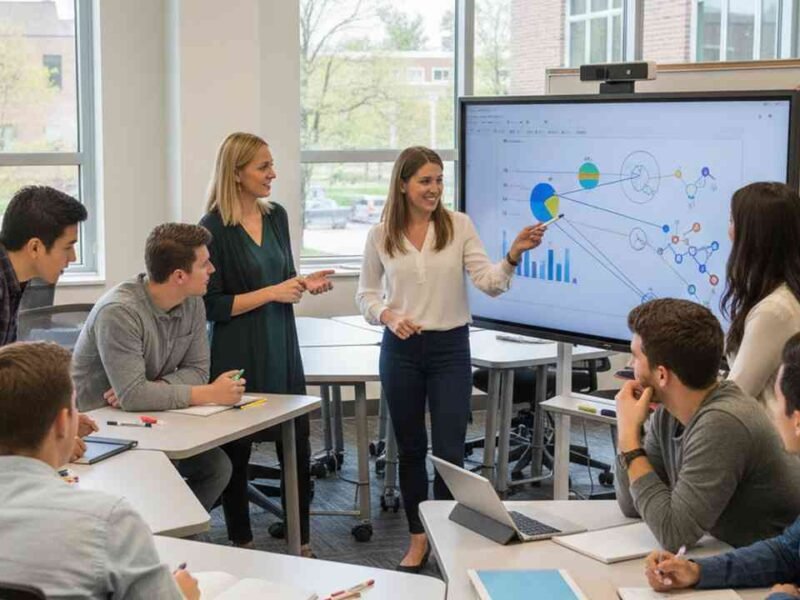In the ever-evolving landscape of education, the tension between fostering creativity and adhering to curriculum standards has never been more pronounced. Educators, administrators, and policymakers are under immense pressure to innovate while ensuring that students meet established benchmarks. This delicate balance is not just a theoretical challenge but a practical one that impacts daily teaching practices and long-term educational outcomes. The urgency to address this issue is compounded by the rapid pace of educational reforms and the increasing demand for educational leaders who can navigate this complex terrain. An educational administration certificate has become a critical asset for those aiming to lead effectively in this dynamic environment. This credential equips professionals with the necessary skills to implement strategies that harmonize creativity with curriculum standards, ensuring that educational institutions thrive amidst these challenges.
Understanding the Dichotomy: Creativity vs. Curriculum Standards
The traditional view of education often pits creativity against curriculum standards, portraying them as opposing forces. Curriculum standards are typically seen as rigid frameworks designed to ensure consistency and accountability, while creativity is viewed as a fluid, often unpredictable force that can disrupt these structures. However, this dichotomy is increasingly being challenged. Research indicates that integrating creative approaches within the confines of curriculum standards can enhance student engagement and deepen learning experiences. For instance, incorporating project-based learning allows students to explore content in innovative ways while still achieving the desired educational outcomes. Such approaches not only meet curriculum standards but also foster critical thinking and problem-solving skills, which are essential in today’s rapidly changing world.
The Role of Educational Leadership in Bridging the Gap
Educational leaders play a pivotal role in reconciling the tension between creativity and curriculum standards. By adopting a visionary approach, they can create an environment that encourages innovation while maintaining academic rigor. Leaders with an educational administration certificate are particularly well-positioned to implement policies and practices that support this balance. These professionals are trained to design curricula that are both standards-aligned and flexible enough to accommodate creative teaching methods. They also serve as advocates for professional development, ensuring that educators have the tools and support they need to integrate creative strategies into their teaching. Through collaborative leadership and a commitment to continuous improvement, educational administrators can foster a culture where creativity and standards coexist harmoniously.
Curriculum Design: Crafting a Framework for Innovation
Effective curriculum design is at the heart of balancing creativity with standards. A well-structured curriculum provides a clear roadmap for what students are expected to learn, while also allowing for the flexibility needed to incorporate creative teaching methods. Instructional strategies such as inquiry-based learning, flipped classrooms, and experiential learning can be seamlessly integrated into the curriculum to promote creativity. These approaches encourage students to take an active role in their learning, ask questions, and apply their knowledge in real-world contexts. By aligning these innovative strategies with curriculum standards, educators can create a dynamic learning environment that fosters both creativity and academic achievement. The key is to view the curriculum not as a set of constraints but as a framework that supports and enhances creative exploration.
Professional Development: Empowering Educators to Innovate
Professional development is crucial in equipping educators with the skills and knowledge necessary to balance creativity with curriculum standards. Workshops, seminars, and collaborative learning communities provide opportunities for teachers to explore new teaching methods, share best practices, and reflect on their instructional approaches. An educational administration certificate often includes components focused on leading professional development initiatives, enabling administrators to support their staff effectively. By fostering a culture of continuous learning, educational leaders can ensure that teachers are not only compliant with curriculum standards but are also inspired and empowered to innovate. This commitment to professional growth benefits both educators and students, leading to improved educational outcomes.
Assessment Strategies: Measuring Creativity within Standards
Assessment is a critical component in the education process, serving as a tool to measure student learning and inform instructional practices. Traditional assessments often focus on rote memorization and standardized testing, which may not fully capture the creative abilities of students. To address this, educators are developing alternative assessment strategies that align with curriculum standards while also recognizing creative skills. Portfolios, performance tasks, and project-based assessments allow students to demonstrate their learning in diverse ways. These assessments provide a more comprehensive picture of student achievement, highlighting not only academic knowledge but also creativity, critical thinking, and problem-solving abilities. By implementing such assessment strategies, educators can ensure that creativity is valued and measured alongside traditional academic skills.
Leveraging Technology to Foster Creative Learning
In the digital age, technology offers unprecedented opportunities to enhance creativity in the classroom. Digital tools and resources can facilitate interactive learning experiences, allowing students to explore content in innovative ways. For example, virtual reality can immerse students in historical events, while coding platforms enable them to create their own digital projects. These technologies not only engage students but also align with curriculum standards by promoting skills such as digital literacy and computational thinking. Educational leaders with an educational administration certificate are equipped to integrate technology into the curriculum strategically, ensuring that its use enhances both creativity and academic achievement. By embracing technology, educators can create a learning environment that is both innovative and standards-aligned.
Collaborative Approaches: Building a Community of Creative Educators
Collaboration among educators is essential in balancing creativity with curriculum standards. By working together, teachers can share ideas, resources, and strategies that promote creative teaching and learning. Professional learning communities, co-teaching models, and interdisciplinary projects encourage collaboration and foster a culture of creativity within schools. Educational administrators play a crucial role in facilitating these collaborative efforts, providing the necessary support and resources to make them successful. An educational administration certificate prepares leaders to cultivate a collaborative environment that values creativity and supports the professional growth of educators. Through collaboration, schools can develop innovative solutions to the challenges of balancing creativity with curriculum standards.
Policy and Advocacy: Influencing Systemic Change
Balancing creativity with curriculum standards requires systemic change, and educational leaders are in a unique position to advocate for such change. By engaging with policymakers, participating in educational reform initiatives, and promoting research-based practices, administrators can influence policies that support creative teaching and learning. An educational administration certificate provides the knowledge and skills necessary to navigate the policy landscape and advocate effectively for the needs of students and educators. Through policy and advocacy, educational leaders can create an environment where creativity is recognized as an essential component of education and where curriculum standards support, rather than hinder, creative exploration.
Conclusion: The Imperative of Balancing Creativity and Curriculum Standards
The challenge of balancing creativity with curriculum standards is not merely an academic debate but a pressing issue that affects the quality of education and the future of students. As the educational landscape continues to evolve, it is imperative that educators, administrators, and policymakers work together to find innovative solutions that honor both creativity and academic rigor. An educational administration certificate is a valuable tool in this endeavor, providing professionals with the expertise to lead effectively in this complex environment. By embracing strategies that integrate creativity within the framework of curriculum standards, educational leaders can ensure that students are not only meeting academic expectations but are also developing the creative skills necessary for success in the 21st century. The time to act is now – those who lead the way in balancing creativity with curriculum standards will shape the future of education.


